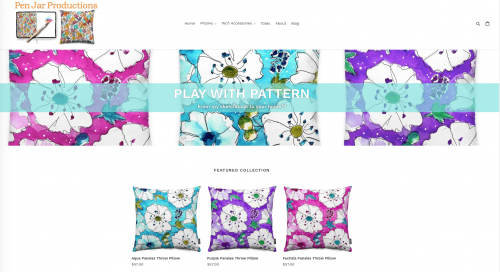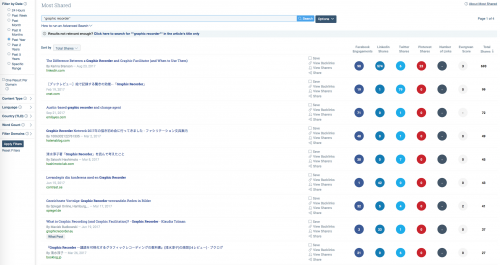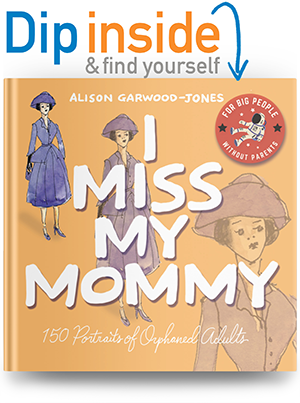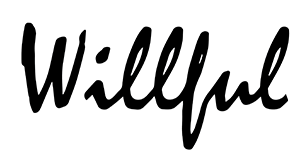Communicating your value as a visual storyteller
September 24, 2018
I first published this post back in August when Gini Dietrich and her team asked me to be a guest contributor at SpinSucks.com. Spin Sucks (the website and the book) is a fantastic resource for up-to-date information and advice on current issues and trends surrounding marketing, communication, social media, entrepreneurship, search engine optimization, and advertising.
Not long ago, I took the first sip of an end-of-day glass of wine and thought to myself, “Sister, you are the Queen of Pivoting.”
In the last five years, I’ve gone from being a full-time magazine feature writer—one of those “tree media” enthusiasts with a blog—to a blogger, content marketer, and occasional magazine writer.
More recently, I’ve become an illustrator who writes and syndicates her stuff everywhere her target audience hangs out.
As more jobs and industries topple with the advance of artificial intelligence, we must diversify our income streams and establish multiple revenue sources.
Skills? What Skills?
You say you can’t draw?
Okay, but we all have skills we are not using to the fullest.
And I’m guessing that most of us in the Spin Sucks Community know artists, designers, or creative directors toying with the idea of going off on their own.
But most are successful in convincing themselves it’s too risky or not the right time to make such big changes.
Let’s face it, it’s never the right time to be creative (or pregnant, for that matter).
How to Explain Visual Storytelling?
Much of that fear comes from not knowing how to communicate our particular value as a visual storyteller, especially when it comes to explaining how we work and what our worth is to clients.
I found it took time and experimentation with a few preliminary clients to hammer out the logistics of working solo before I could effectively communicate my terms and conditions with progressively bigger clients.
So I’ve pulled together some tips to help alleviate your fears.
And it starts with setting clear goals. But first, a bit of context.
Value of Artists to Brands
We know the internet is progressively leaning toward visual storytelling, favoring video and pictures over long-form, and even short-form, written content.
But storytelling through hand-drawn illustrations or handwritten sayings has also been seeing way more than its 15-minutes of fame online.
Sharpie artboards at conferences, chalkboard art on restaurant Instagram feeds, and time-lapse videos of a brush painting a quote. These have all been “a thing” for a while now, and show few signs of slowing down.
In other words, the demand for this kind of brand storytelling is there. And that means no shortage of potential work for you and for me.
Fast Company even took note of the increasing importance of illustration to brands in a recent issue.
Artists and designers provide a fresh perspective and competitive advantage to businesses looking to clarify their marketing message and direction, wrote the author, Leah Lamb.
After all, “who better to lead [brands] through cultural shifts in real time than someone who is actually engaged in the production of culture?”


Alison Garwoood-Jones working as a graphic recorder at a TEDx conference in Toronto in 2016. It was her first professional foray into illustration. No pressure! Photos: Shaghaygh Tajvidi
When I Took the Leap
Last June, I made the leap towards visual storytelling official when I set up a second Ikea desk in my apartment and founded the design studio, Pen Jar Productions.

I decided it was time to tap into convenient advances in print-on-demand technology (no inventory and no shipping) and start selling my pen and watercolor illustrations on home décor items and tech accessories.
I am even in the process of trademarking the tagline, “From my sketchbook to your home.™”
There were many on my social feeds who’d enthusiastically insist, “If you put that flower pattern on a pillow, I’d buy it.”
I knew drawing more would be something I’d enjoy and be good at professionally, so I listened.
During the past few months, as this pivot goes from a dare to reality, I’ve had to tell the side of me that keeps insisting, “BUT, YOU’RE A WRITER,” to hush up and listen.

Where it all happens. Just go to Ikea, buy yourself a desk, and start experimenting. You never know where it will take you.
Here is what I have learned through trial and error so far.
Online Groups are Good for Digital Marketing Therapy
Like many of you, I come to the Spin Sucks blog and community for professional guidance on a range of topics in social media, communications, entrepreneurship, content marketing, distribution, and SEO.
But unlike most of you, I’m not a PR practitioner (never have been), nor did I go to business or PR school to learn about measurable objectives, strategies, and tactics (there’s a difference?).
But I doubt I’m the only artsy one among us.
I realized how important understanding digital strategy was in getting my artistic talent and skills in front of the people who would want to pay for them.
So I signed up for the Modern Blogging Masterclass, followed by the Spin Sucks 30-Day Communications Challenge this past January.
I continue to post questions to the Spin Sucks 30-Day Challenge Slack Group, which remains open because of its enormous value to our professional development.
And no, Gini is not paying me to say any of this!
We all need a place to admit our cluelessness and share our marketing missteps.
That Slack group is mine.
A true colleague will gently course correct you and share what works for them.
These days crowd-sourcing solutions within professional groups serves to help us all adjust to the mind-boggling pace of change. And members can also help you spot opportunities.
Set Goals: Be Accountable to Yourself First
It doesn’t matter if you are an accountant, a podcaster, an AI expert, or an illustrator. We’re all seeking more leads and conversions.
Achieving that means taking time to experience and move through the existential doubt that comes with defining, adjusting, and achieving a stated, measurable objective.
Learning how to execute a proper digital strategy starts with writing a SMART objective (specific, measurable, achievable, realistic, time-bound).
Follow this with a distribution plan integrating Paid, Earned, Shared and Owned tactics. This helps ensure your content gets in front of the right audience via multiple streams and options.
Learning all of this stuff from this community has added structure, direction, and accountability to my pivot towards visual storytelling.
Be Realistic
True story: I didn’t start PenJarProductions.com with a SMART objective, even though I knew better.
And I even teach my students in Digital Communications Strategy at University of Toronto’s School of Continuing Studies to never practice “Pasta PR” (throw it at the wall and see what sticks—h/t Martin Waxman).
But businesses rarely evolve in a linear fashion.
So this is what really happened. I made about $500 in custom pillow sales before I even knew whether I would set up with Shopify or join the Etsy marketplace.
I was playing around late last spring, dropping my drawings on the Notion.ca pillow template, then showing my friends the results on Facebook to gauge interest.
That’s when the orders began coming in via the comments!
The internet was telling me something.
At that point, I decided to order the product with my designs and resell it to friends.
Later, once my Shopify store was up and running and integrated with Notion (my manufacturer), more sales came in.
But two months after this initial love fest over my career pivot, the crickets moved in.
That’s when I knew I needed to come up with a proper SMART objective.
What am I trying to achieve here? Where can I realistically take this business? How can my hand-drawn products serve niche communities?
Re-evaluate Your Measurable Objective
My first measurable objective matched my initial sales out of the gate: five pillow sales a month.
When I ran out of friends who needed pillows (and I knew I would), I re-evaluated my SMART objective. I revised it to two sales per month, or enough to cover my monthly Shopify storefront charge.
Look at how miniscule my objective is, and how it keeps getting smaller and more realistic.
I am sharing this with you because we’re too conditioned to seeing stories on LinkedIn about creative entrepreneurs who are scaling this, killing at that, and hiring staff in record time (thanks, Gary V!).
These stories are as breathless and hyperbolic as 1990s blockbuster movie reviews.
Then there’s the rest of us, feeling our way in the dark.
By adjusting my measurable objective, I am turning my attention away from sales to attracting leads and building brand awareness.
Now, I’ve committed to spending $200 per month for the next three months for paid social in exchange for five leads a month and one sale—if I’m lucky.
I’m applying everything I’ve learned from Marcus Sheridan’s “They Ask, You Answer” philosophy of search content marketing. (He continues to do this so well.)
For example, “How do you get your drawings on pillows?” a question asked on Facebook.
I answered this via an Instagram TV video tour of my manufacturing process on site at Notion.
Another question I saw on Instagram, “Are your pillows safe for the outdoors?”
I answered this by using an illustration of a squirrel eating a pillow (the answer would be a “no”).
 You get the gist.
You get the gist.
When I went to LinkedIn and told Marcus Sheridan how I was applying his Q&A philosophy to my new biz, I got a, “You go, girl! I love this.” from the master himself.
For a newbie retailer like me, that sort of public high five goes a lo-o-o-ong way. It fuels my energy to grow this thing.
Go Niche
As I build my print-on-demand illustration business, simultaneously I’ve been getting work as a graphic recorder at conferences.
(Translation: someone who does Sharpie art of speakers’ talks.)
I was able to get this work through effective Q&A content marketing, not by casting my net as wide as possible, but by going niche.
Using keywordtool.io and Google Ads Keyword Planner, I was able to find out the kind of questions people were asking about working with a graphic recorder.
(I also used the terms “graphic facilitator” and “graphic visualizer.”)
There, I found the question “Why hire a graphic visualizer?” and saw it had a very low search volume.
As I learned from the Modern Blogging Masterclass and the PESO model in general, this is a good thing!
I capitalized on the opportunity by applying Sheridan’s Q&A-style of search content marketing, making a video slideshow with my drawings that answer the question of why brands should hire graphic recorders.
And it worked!
I got three more gigs soon after.
When I asked each of those clients how they found me, they answered, “Through keyword searches on Google.”
For a while, this video was ranked number six on page one of Google. Not bad for someone with a domain authority of 25.
Using BuzzSumo also taught me the highest search volume for “graphic recorders” was on LinkedIn, and almost no one was searching this niche term on Twitter.
In other words, I knew where my target audience was hanging out.
I could meet them there with stories, pictures, and videos showing how I’d work with them to solve their challenges.
As an example, a TEDx conference opportunity came through LinkedIn.

A keyword search for the term “graphic recorder.” BuzzSumo showed the most searches for this term happened on LinkedIn-574 vs. 93 on Facebook and six on Twitter. I focused my content marketing for that skill on LinkedIn Publisher, and got jobs as a result!
As for my new design company, through my targeting efforts in paid social, I’m learning not to go after huge communities of people.
Rather than going mass and trying to reach the huge community of #homedecor lovers, I’ve seen better results meeting the needs of super niche communities.
For example, this summer I created totes and pillows for 700 Toronto Islands residents who ride vintage 1930s ferries back and forth between the mainland and the islands.
These folks need bags to carry their groceries.
And tourists who ride the ferries want mementos of this beautiful provincial park six minutes from downtown.

AGJ with her “Off to the islands” tote bag. The design was aimed at Toronto Island residents and tourists taking the vintage ferries. Notion.ca prints her art on totes, pillows, and tech accessories (phone covers and laptop skins).
So far, my plan is working.
My Shopify sales funnel is filling up again. (I made eight sales in four hours at a recent craft fair on Ward’s Island.)
These aren’t Ikea sales numbers because I’m offering one-of-a-kind items at a higher price point.
I’m also counting on the fact that not everyone wants a pillow design that 936 million shoppers have seen, manhandled or bought (actual IKEA stats on customers served in 2017).
Because there are so many niche groups and weirdos out there, I can cater to their obsessions through individual illustration campaigns: cats, writers, pug enthusiasts, etc.
Set Your Terms
This past winter, a design firm got in touch with me to do portrait illustrations for the lobby of a new boutique hotel opening in Toronto.
I asked my more experienced illustrator friends, and a magazine art director, for advice on writing my terms and conditions for the job.
It was time to craft my own set of standards.
They sent me examples of the standard rights artists must insist on, as well as, the working conditions they should accept and reject.
This video also helped.
Doing more than two revisions per illustration without being paid, for example, can be hard on you financially.
And nitpicky clients will take advantage of you if you don’t state your boundaries. “Sure I can draw that celebrity a third time with looser lines, but it’ll cost ya.”
By the way, said design firm found me through a Google image search.
They were looking for a drawing of Jane Jacobs, the urban activist, and came upon my Pinterest page.
Which leads me to my final piece of advice.
As you experiment and discover your style, set yourself up to be found.
As Austin Kleon would say, “Show your stuff!”
Use Instagram as your art gallery and sandbox, and use your blog as your archive.
Then tag and categorize each drawing so it reaches those potential niche audiences who would love your pug drawing (#PugsOfInstagram), or your sketch of Robert Downey Jr. (ahem, Gini).
Above all, don’t ignore your creative impulses. Start playing!
Afterword: Since I first wrote this post, I have gained even more valuable tips and insights on how to build a “portfolio career” (i.e. creating multiple revenue streams) from Dorie Clark’s book, Entrepreneurial You (2017: Harvard Business Review Press). I can’t recommend it enough.



























Leave a Reply